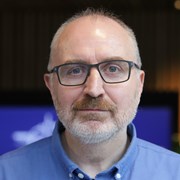The future zero-emission energy system
A significant example of this is the solar panels that have been installed on existing buildings in cities. In addition, heat pumps can be used to transform ambient heat in the air, water and earth, as well as waste heat from industry, into useful energy – preferably in a low-temperature thermal grid to reduce heat losses.
Heat pumps are profitable technology, and increasing their use has been one of Enova’s prioritised goals for a long time. Building regulations can also result in increased energy efficiency, and TEK-17 has been important for new buildings for some time.
Solutions that can reduce the power peaks in the power grid
On the consumption side, electrification of consumption is a dominant trend, particularly through the electrification of the car fleet. Power consumption is increasing annually, but a greater challenge is that the maximum consumption during power peaks is increasing even more. As a result, a significant need for investment in the electrical grid is expected in the future.
This also means that alternative, emission-free energy solutions that can reduce the power peaks will be very socio-economically profitable. The same applies to various solutions that can provide flexibility through consumption management or energy storage. This business idea is the focus of many studies of local integrated energy systems, both for cities and smaller areas and neighbourhoods.
Integrate
Integrated energy systems are one of SINTEF Energy’s focus areas. Part of this work involved the development of Integrate, which is a software system that includes a user interface for cost optimalisation of local energy systems. While other tools are customised for either power or heat supply, Integrate stands out by being a multi-energy model that incorporates competing energy carriers and technologies. This type of tool will be extremely important for optimising the energy mix in cities and neighbourhoods in the future. Integrate is also being used in the Norwegian Centre for Environment-friendly Energy Research (FME) ZEN, which focuses on zero-emission neighbourhoods.
We work with the following topics:
- How can local measures contribute to reduced investment costs in the energy system’s power supply to an area by, for example, renovating buildings, solar panels and batteries, developing waterborne heat and heat storage, making use of waste heat and ambient heat combined with heat pumps, and predicting future consumption?
- Which local energy solutions are appropriate and cost effective?
- Which technologies should be used, and which sizing is appropriate? For example, how powerful should the heat pump be? Should associated measures be implemented, e.g. to enable district heating companies to increase the temperature or to enable customers to receive lower temperatures?
Our typical projects include:
We perform analyses of integrated energy systems within a specific geographical area that is relevant for the customer, such as:
- A neighbourhood
- A housing cooperative
- The geographical area covered by a district heating system
These types of analyses enable us to recreate the current energy system, e.g. in the Integrate software system, add prognoses for future development and consumption, and investigate opportunities to develop the local energy system with different power sources and technologies.
Measures can also be added for the supply, conversion and end-use of energy. This enables us to calculate costs for both energy consumption and investments, as well as other KPIs, such as emissions in various system designs.
In these instances, it is typically important to estimate the costs saved due to delayed or avoided investments in strengthening the electrical grid. Such studies are normally conducted in close collaboration with the customer, who has knowledge and/or ownership of the system.
Who do we do this for?
Our customers in this area are various stakeholders within the development of and costs for energy supply:
- Energy consumers, e.g. housing cooperatives
- Energy companies, e.g. district heating companies
- Area developers
- Authorities, e.g. municipalities
- EU research programmes
Featured projects
- Energy supply at Furuset, pilot project in FME ZEN for Oslo municipality
- Energy supply for Risvollan housing cooperative, case study in FME ZEN
- Development of Statkraft Varme’s district heating at Gardermoen, case studie in FME ZEN
- eNeuron, EU financed project
- OpenEntrance, EU financed project

